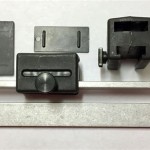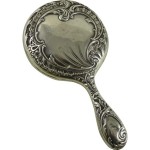Stick-On Frames for Mirrors: An Accessible and Versatile Decor Solution
Mirrors are ubiquitous elements in interior design, serving both functional and aesthetic purposes. They reflect light, creating a sense of spaciousness, and can act as focal points within a room. While mirrors are inherently versatile, their appearance can be further enhanced with the addition of a frame. However, the process of installing a traditional frame can be complex, time-consuming, and potentially damaging to the mirror itself. Stick-on frames offer a compelling alternative, providing an accessible, versatile, and relatively damage-free solution for transforming the look of any mirror.
Stick-on frames, as the name suggests, adhere directly to the surface of the mirror using an adhesive backing. This eliminates the need for drilling, nailing, or employing specialized tools, making it a user-friendly option for individuals of varying skill levels. The market offers a wide array of stick-on frame styles, materials, and finishes, catering to diverse design preferences and budget constraints. From sleek and modern metal frames to ornate and rustic wood-look options, the possibilities are extensive.
The Advantages of Using Stick-On Mirror Frames
The popularity of stick-on frames stems from a multitude of advantages they offer over traditional framing methods. These advantages encompass ease of installation, cost-effectiveness, design versatility, and the potential for customization, making them a particularly attractive solution for renters, budget-conscious homeowners, and those seeking a quick and impactful decor update.
Simplified Installation: The most significant advantage of stick-on frames is their ease of installation. Unlike traditional frames that require precise measurements, cutting, and secure attachment, stick-on frames typically involve a simple peel-and-stick application. The user cleans the mirror surface, removes the protective backing from the adhesive, and carefully positions the frame before pressing it firmly into place. This straightforward process significantly reduces the time and effort required to frame a mirror, minimizing the risk of errors or damage.
Cost-Effectiveness: Compared to custom-made or professionally installed traditional frames, stick-on frames represent a more affordable option. The materials used in their construction are often less expensive, and the elimination of professional installation fees further reduces the overall cost. This makes stick-on frames an ideal solution for individuals on a budget who are looking to enhance the aesthetic appeal of their mirrors without incurring significant expenses.
Design Versatility: The market offers a vast selection of stick-on frame styles, materials, and finishes, catering to a broad spectrum of design preferences. Whether one prefers a minimalist aesthetic with a thin, metal frame or a more elaborate look with an ornate, wood-grain finish, there is a stick-on frame to suit virtually any decor style. Furthermore, the availability of different sizes and shapes allows for customization, ensuring that the frame complements the dimensions and form of the mirror.
Removability and Reversibility: While the adhesive on stick-on frames is designed to provide a secure bond, many options are also removable without causing damage to the mirror surface. This is a particularly important consideration for renters who may need to remove the frame upon moving out. Similarly, the reversibility allows for easy style updates or changes in decor without requiring the purchase of a new mirror. However, it is crucial to select frames with adhesives specifically designed for removability to minimize the risk of residue or damage.
Reduced Risk of Damage: Traditional framing methods often involve drilling holes into the wall or attaching brackets to the mirror itself, which can potentially cause damage if not performed correctly. Stick-on frames eliminate this risk by adhering directly to the mirror surface without requiring any invasive procedures. This makes them a safer option for protecting the integrity of the mirror, particularly for older or more fragile pieces.
Materials and Styles Available for Stick-On Mirror Frames
The diverse range of materials and styles available for stick-on mirror frames allows consumers to select options that perfectly complement their existing decor and personal preferences. Understanding the characteristics of different materials and the nuances of various styles is essential for making an informed decision.
Materials: Stick-on frames are typically constructed from a variety of materials, each offering distinct aesthetic qualities and performance characteristics. Common materials include:
* Plastic: Plastic frames are generally the most affordable option, offering a wide range of colors and finishes. They are lightweight, durable, and resistant to moisture, making them suitable for bathrooms and other humid environments. However, they may not possess the same level of visual appeal as frames made from more premium materials.
* Metal: Metal frames offer a sleek and modern aesthetic, often featuring clean lines and minimalist designs. They are durable, corrosion-resistant, and can be finished in a variety of colors, including silver, gold, and black. Metal frames are particularly well-suited for contemporary and industrial-style interiors.
* Wood (or Wood-Look Alternatives): Wood frames provide a warm and natural aesthetic, adding a touch of rustic charm to any space. However, solid wood frames can be more expensive and susceptible to moisture damage. As a result, many stick-on frames utilize wood-look alternatives, such as MDF or composite materials, which offer a similar aesthetic at a lower cost and with improved durability.
* Acrylic: Acrylic frames offer a modern and minimalist aesthetic, often featuring a clear or translucent finish. They are lightweight, durable, and provide a seamless look, allowing the mirror to take center stage. Acrylic frames are particularly well-suited for contemporary and minimalist interiors.
Styles: The style of a stick-on frame can significantly impact the overall aesthetic of the mirror and the room in which it is placed. Some popular styles include:
* Modern: Modern frames are characterized by clean lines, minimalist designs, and neutral colors. They often feature metal or acrylic materials and are designed to complement contemporary interiors.
* Traditional: Traditional frames typically feature ornate details, intricate carvings, and rich finishes. They often incorporate wood or wood-look materials and are designed to evoke a sense of elegance and sophistication.
* Rustic: Rustic frames are characterized by natural textures, weathered finishes, and earthy tones. They often incorporate wood or wood-look materials and are designed to create a warm and inviting atmosphere.
* Bohemian: Bohemian frames often feature eclectic designs, vibrant colors, and unconventional materials. They are designed to add a touch of personality and individuality to any space.
Considerations When Choosing and Installing Stick-On Mirror Frames
While the installation of stick-on mirror frames is generally straightforward, there are several key considerations that should be taken into account to ensure a successful and aesthetically pleasing outcome. These considerations encompass the size and shape of the mirror, the type of adhesive used, the overall design of the room, and the proper cleaning and preparation of the mirror surface.
Mirror Size and Shape: The size and shape of the mirror should be carefully considered when selecting a stick-on frame. The frame should be proportional to the mirror, neither overwhelming it nor appearing too small. For larger mirrors, a wider frame may be more appropriate, while smaller mirrors may benefit from a thinner, more delicate frame. Similarly, the shape of the frame should complement the shape of the mirror. For example, a rectangular mirror may pair well with a rectangular or slightly rounded frame, while a circular mirror may be enhanced by a round or square frame.
Adhesive Type: The type of adhesive used on the stick-on frame is a critical factor in determining its longevity and ease of removal. It is essential to select a frame with an adhesive that is specifically designed for use on mirrors and that is strong enough to hold the frame securely in place without damaging the mirror surface. Ideally, the adhesive should also be removable without leaving residue or causing discoloration. Reading product reviews and checking with the manufacturer can provide valuable insights into the performance of different adhesives.
Room Design and Decor: The style and finish of the stick-on frame should complement the overall design and decor of the room in which it is placed. Consider the existing color palette, furniture style, and architectural details when making a selection. For example, a sleek metal frame may be well-suited for a modern bathroom with chrome fixtures, while a rustic wood frame may be more appropriate for a farmhouse-style living room. Choosing a frame that aligns with the existing aesthetic will create a cohesive and harmonious look.
Surface Preparation: Proper preparation of the mirror surface is essential for ensuring a strong and lasting bond between the frame and the mirror. Before applying the frame, thoroughly clean the mirror surface with a glass cleaner and a lint-free cloth to remove any dirt, dust, or grease. Pay particular attention to the edges of the mirror, where the frame will be applied. Allow the mirror surface to dry completely before proceeding with the installation. Avoid using abrasive cleaners or harsh chemicals, as these can damage the mirror surface.
Proper Alignment and Application: Before removing the adhesive backing, test the placement of the frame to ensure that it is properly aligned and centered on the mirror. Use a level to ensure that the frame is straight and even. Once you are satisfied with the placement, carefully remove the adhesive backing and press the frame firmly onto the mirror surface, starting from one edge and working your way around. Apply even pressure to ensure that the frame is firmly bonded to the mirror. Avoid repositioning the frame after it has been applied, as this can weaken the adhesive bond.
By considering these factors and following the manufacturer's instructions carefully, individuals can successfully install stick-on mirror frames and enhance the aesthetic appeal of their mirrors with ease and affordability.

Avery Black Mirror Frame Kit Self Adhesive My

Diy Stick On Mirror Frame Sawdust Sisters

Diy Stick On Mirror Frame Sawdust Sisters

Diy Stick On Mirror Frame Sawdust Sisters

Stick On Frame Adhesive For Bathroom Mirrors And Decal Sayings Diy Mirror

Easy Diy Stick Framed Mirror That Looks Expensive

Mirror Frame Diy How To Update A Basic Bathroom Our Faux Farmhouse

Diy Stick On Mirror Frame Sawdust Sisters

Diy Stick On Mirror Frame

Mirror Frame Diy How To Update A Basic Bathroom Our Faux Farmhouse








